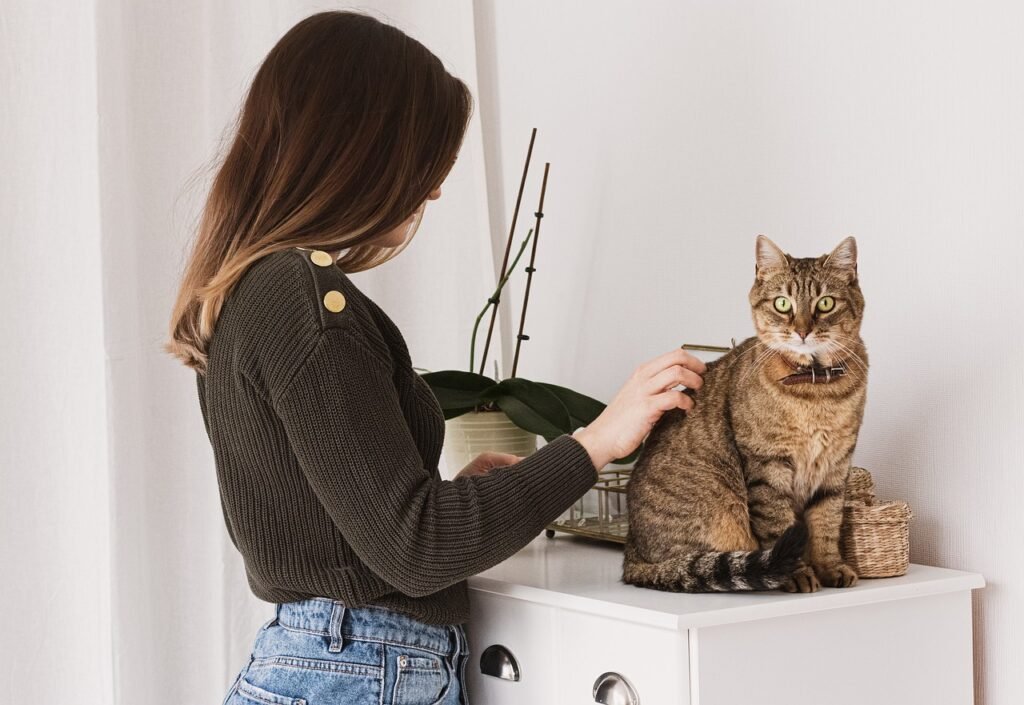
Cats are known for their grooming habits, spending a significant portion of their day licking themselves clean. However, there are occasions when additional cleaning is necessary to ensure their hygiene and health. While bathing a cat can be a daunting task for both the pet and the owner, there are effective alternatives to keep your feline friend clean without the need for a bath. This article will explore various methods and techniques to maintain your cat’s cleanliness and hygiene without resorting to water.
Understanding Your Cat’s Natural Grooming
Before delving into alternative cleaning methods, it is crucial to understand a cat’s natural grooming habits. Cats have evolved to be meticulous groomers, using their tongue’s tiny barbs to remove loose fur, dirt, and parasites. This self-grooming process not only keeps them clean but also helps distribute natural oils across their coat, maintaining its shine and health.
Despite their grooming prowess, there are instances when your cat might need a little help. Situations such as illness, obesity, or simply getting into something particularly messy can hinder their ability to groom effectively. Recognizing these scenarios and intervening appropriately can enhance your cat’s overall well-being.
Dry Shampoo for Cats
One of the most effective ways to clean your cat without water is by using a dry shampoo. These products are specifically formulated for cats and can help remove dirt and oil from their fur without the stress of a bath. To use dry shampoo, sprinkle it onto your cat’s coat, avoiding the face, and gently massage it through their fur. After allowing it to sit for a few minutes, brush it out thoroughly.
Benefits of Dry Shampoo
- Convenience: Quick and easy to apply.
- Stress-free: No water or bathing is involved.
- Effective: Removes dirt and oil while leaving the coat smelling fresh.
Brushing: A Crucial Habit
Regular brushing is an integral part of cat grooming and can significantly reduce the need for baths. Brushing helps remove loose fur, dirt, and debris, preventing matting and reducing hairballs. It also stimulates blood circulation and the production of natural oils, contributing to a healthy, shiny coat.
Choosing the Right Brush
Selecting the appropriate brush for your cat’s fur type is essential for effective grooming. For short-haired cats, a bristle or rubber brush works well, while long-haired cats benefit from a slicker brush or a wide-toothed comb. Regular brushing sessions, ideally a few times a week, can help maintain your cat’s coat and reduce shedding.
Pet Wipes: A Handy Tool
Pet wipes are an excellent tool for quick and effective cleaning of your cat’s fur. These wipes are designed to be gentle on your cat’s skin, making them a safe choice for regular use. They are particularly useful for spot cleaning or wiping down areas like the paws, face, and rear end.
How to Use Pet Wipes
To use pet wipes, simply take a wipe and gently rub it over the area you wish to clean. Pay special attention to any dirt or debris, and avoid using wipes near the eyes or inside the ears. Pet wipes are also helpful for cleaning after your cat uses the litter box, ensuring their paws remain clean.
Maintaining Oral Hygiene
Oral hygiene is an often-overlooked aspect of cat grooming. Dental health is crucial for your cat’s overall well-being, and regular cleaning can prevent dental diseases and bad breath. While brushing your cat’s teeth might be challenging, there are alternatives such as dental wipes, gels, and treats designed to reduce plaque and tartar buildup.
Tips for Oral Hygiene
- Introduce dental care gradually to get your cat accustomed to the process.
- Use cat-specific dental products for safety and effectiveness.
- Regular veterinary check-ups to monitor dental health.
Cleaning Ears and Eyes
Regular cleaning of your cat’s ears and eyes is vital to prevent infections and maintain good hygiene. It’s essential to use products specifically designed for cats and to be gentle during the cleaning process.
Ear Cleaning
To clean your cat’s ears, use a vet-approved ear cleaner and a cotton ball. Gently wipe the outer ear, avoiding the inner ear canal. Regular checks for redness, odor, or discharge can help detect issues early.
Eye Cleaning
For eye cleaning, use a damp cotton ball or a soft cloth to gently wipe away any discharge. Be cautious and avoid touching the eyeball directly. Regular cleaning helps prevent tear staining and infections.
Managing Litter Box Cleanliness
Maintaining a clean litter box is crucial for your cat’s hygiene and can significantly reduce odors in your home. Scoop the litter box daily and change the litter regularly to ensure a fresh and clean environment for your cat.
Litter Box Tips
- Choose a litter type your cat prefers to encourage regular use.
- Consider using litter box liners for easier cleaning.
- Place the litter box in a quiet, accessible location.
Diet and Grooming
A balanced diet plays a significant role in maintaining your cat’s coat and overall hygiene. High-quality cat food supports healthy skin and fur, reducing shedding and the need for frequent cleaning.
Dietary Considerations
- Omega-3 and Omega-6 fatty acids promote a healthy coat.
- Avoid foods with excessive fillers and artificial additives.
- Consult your veterinarian for dietary recommendations tailored to your cat’s needs.
Conclusion
Effective cat cleaning does not always require a bath. By understanding your cat’s natural grooming habits and utilizing alternative cleaning methods, you can maintain their hygiene and well-being without the stress of water. Regular brushing, using dry shampoo, pet wipes, and maintaining oral hygiene are crucial components of a comprehensive grooming routine. Additionally, ensuring a clean litter box and a balanced diet will contribute to your cat’s overall health and happiness. Implementing these practices will not only keep your feline friend clean and fresh but also strengthen the bond between you and your pet.
#ChatGPT assisted in the creation of this article.






